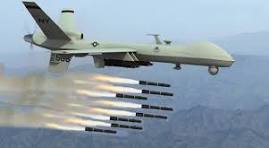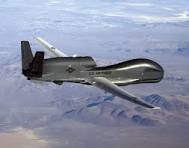It seems we can’t find what you’re looking for. Perhaps searching can help.
TECHNOLOGY
Future Technology for War: The Rise of Military Drones Introduction

The future of warfare is rapidly evolving, with drones at the forefront of this technological revolution. These unmanned aerial vehicles (UAVs) are no longer just tools for surveillance; they are becoming integral components of modern military strategy, capable of executing complex missions with precision and efficiency. This article explores how advanced drones are shaping the future of warfare, highlighting the technology, capabilities, and potential implications.


Advanced Drone Technology
Future military drones are expected to feature cutting-edge technologies that enhance their effectiveness on the battlefield. These include:
– **Stealth Design:** Future drones will be designed with advanced stealth capabilities, making them harder to detect by enemy radar systems. This allows them to operate in hostile environments with reduced risk of interception.
– **AI-Driven Decision-Making:** Artificial intelligence (AI) will play a crucial role in the operation of military drones. AI algorithms will enable drones to make real-time decisions, such as identifying targets, navigating complex terrains, and executing missions autonomously or semi-autonomously.

– **Energy Weapons:** Drones equipped with directed energy weapons, such as lasers, will be capable of precise strikes with minimal collateral damage. These weapons offer the advantage of silent, rapid attacks, making them ideal for neutralizing high-value targets.
– **Coordinated Operations:** Future drones will operate in swarms, coordinating with each other to carry out complex missions. This could include synchronized attacks, intelligence gathering, and defense against enemy forces. The ability to communicate and cooperate in real-time will be a game-changer in military strategy.
#### Implications for Warfare
The integration of advanced drones into military operations will have profound implications:
– **Reduced Risk to Human Life:** Drones can perform dangerous missions without risking human lives, making them invaluable for reconnaissance, strike missions, and search and rescue operations.
– **Increased Precision and Efficiency:** With AI and advanced sensors, drones can identify and engage targets with unprecedented precision, reducing the likelihood of collateral damage and increasing mission success rates.
– **Shift in Military Strategy:** The use of drone swarms and AI-driven systems will lead to a shift in how wars are fought, emphasizing speed, precision, and adaptability. Traditional ground and air forces may be supplemented or even replaced by autonomous drone fleets in certain scenarios.
#### Ethical and Strategic Considerations
While the technological advancements in military drones are impressive, they also raise ethical and strategic concerns:
– **Autonomy in Lethal Decisions:** The use of AI in making lethal decisions without human intervention is a contentious issue, raising questions about accountability and the potential for unintended consequences.
– **Escalation of Conflicts:** The ease of deploying drones for strikes could lower the threshold for engaging in military conflicts, potentially leading to more frequent and prolonged wars.
– **Global Arms Race:** As more nations develop and deploy advanced military drones, there is a risk of a global arms race, with countries competing to outdo each other in drone technology and capabilities.
#### Conclusion
The future of warfare is being shaped by the rapid advancements in drone technology. As these machines become more sophisticated, they will play an increasingly central role in military operations, offering new capabilities and transforming the nature of combat. However, the deployment of such powerful technology also requires careful consideration of the ethical, strategic, and global implications to ensure that it is used responsibly and effectively.